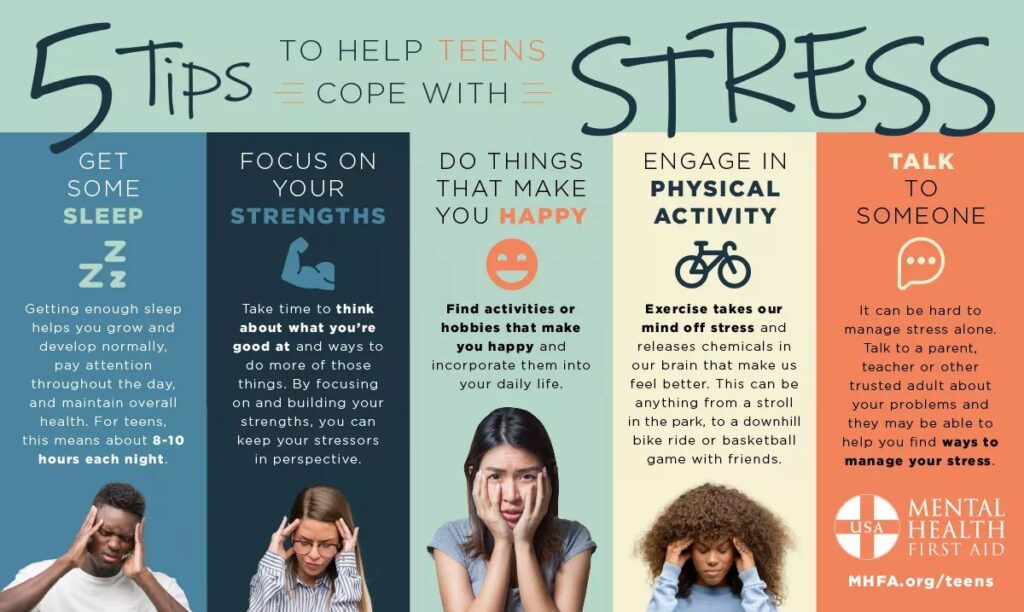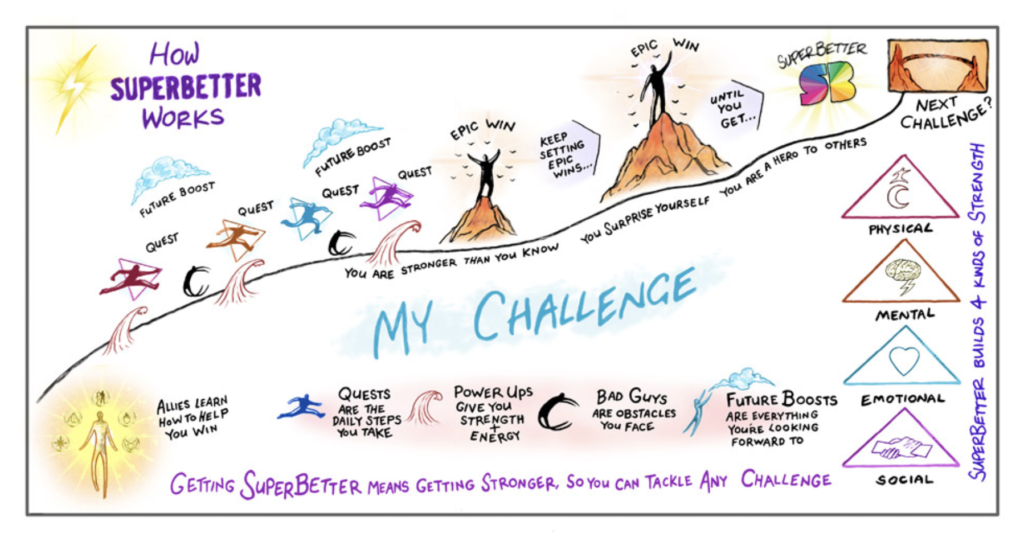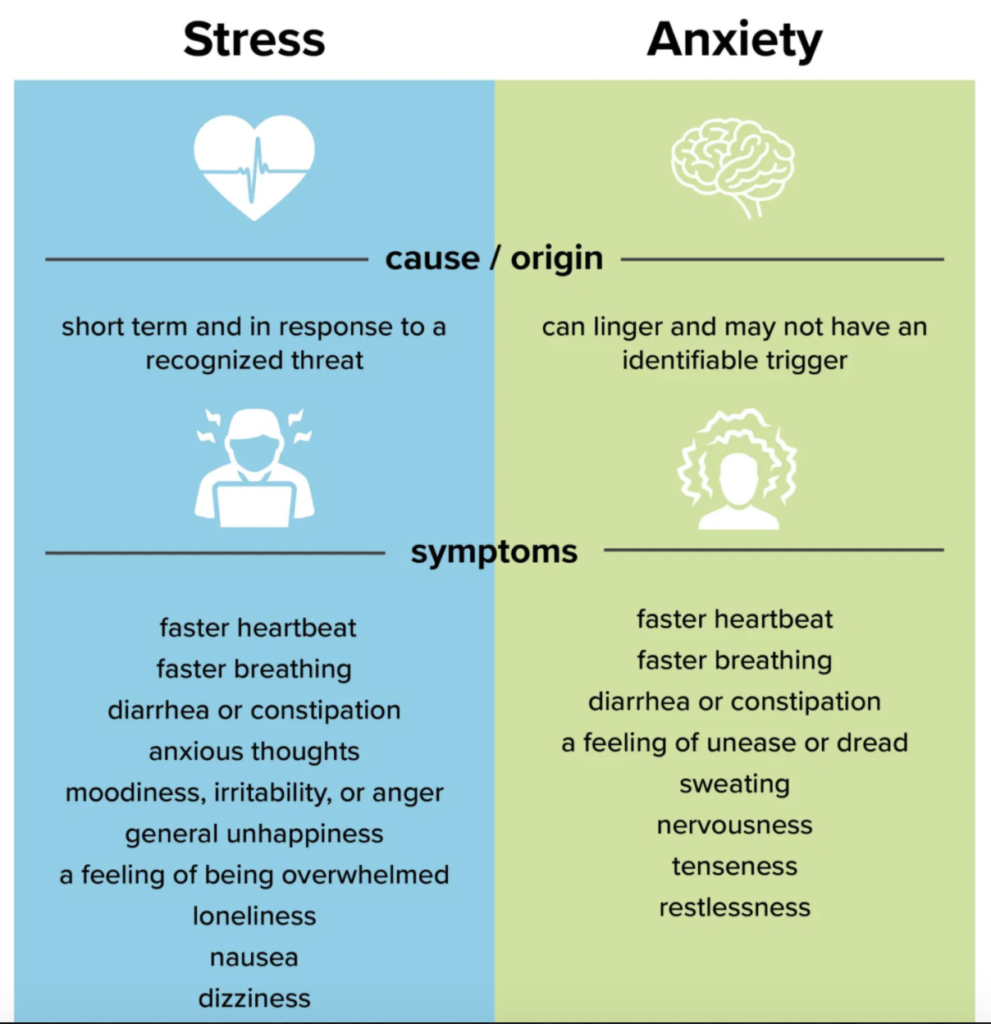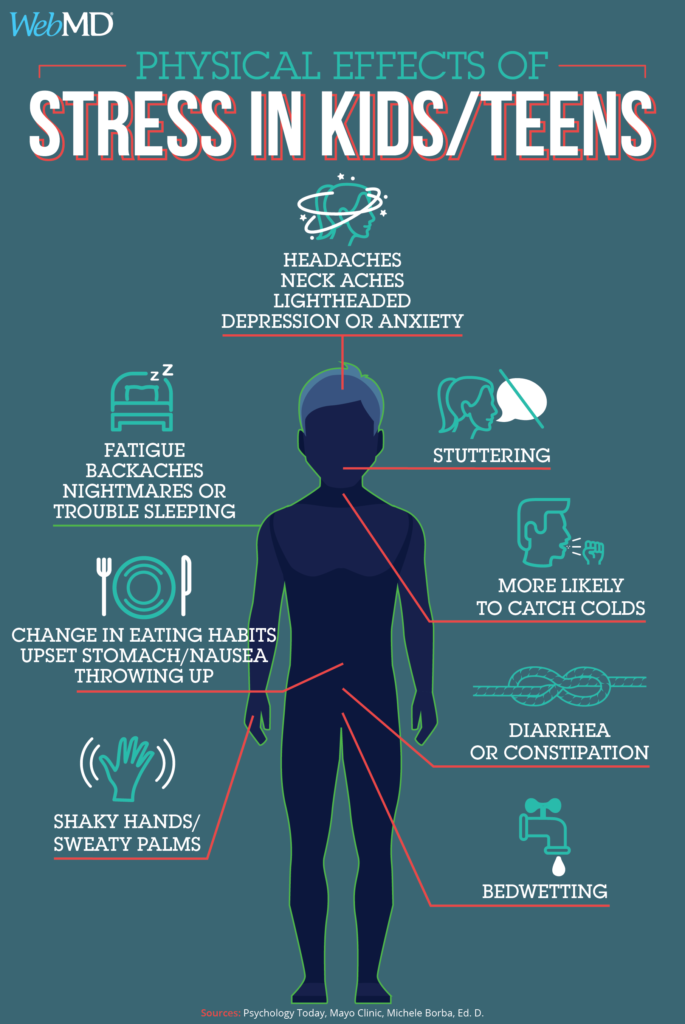The human body is designed to experience stress and react to it. Stress can be positive, keeping us alert, motivated, and ready to avoid danger. Stress becomes negative when a person faces continuous challenges without relief or relaxation between stressors. As a result, the person becomes overworked, and stress-related tension builds. The body’s autonomic nervous system has a built-in stress response that causes physiological changes to allow the body to combat stressful situations. This stress response, also known as the “fight or flight response”, is activated in case of an emergency. However, this response can become chronically activated during prolonged periods of stress. Prolonged activation of the stress response causes wear and tear on the body, both physical and emotional.3

Apps to try:
7 Cups: 7 Cups helps you connect with kind, caring people who will listen to you and comfort you, without any judgement or stigma.
The daily exercises are simple therapeutic steps to keep you calm and relaxed.4
SuperBetter: At the heart of SuperBetter is the Live Gamefully® method, a framework that brings the psychological strengths and mindset of gameplay to real life. The method promotes new levels of personal growth as a result of stress and change.
That’s why it’s called SuperBetter.5

For more information on Stress, go to:
Anxiety vs Stress7


Do you think you or someone you know is suffering from stress? Take the stress self-assessment HERE.
3Stress: Signs, Symptoms, Management & Prevention. (n.d.). Retrieved from https://my.clevelandclinic.org/health/articles/11874-stress
4Free Care & Therapy. (n.d.). Retrieved from https://www.7cups.com/
5How it Works. (n.d.). Retrieved from https://www.superbetter.com/how_it_works
6Five Tips to Help Teens Cope with Stress. (2019, June 26). Retrieved from https://www.mentalhealthfirstaid.org/2019/06/five-tips-to-help-teens-cope-with-stress/
7Stress vs. anxiety: Differences, symptoms, and relief. (n.d.). Retrieved from https://www.medicalnewstoday.com/articles/stress-vs-anxiety